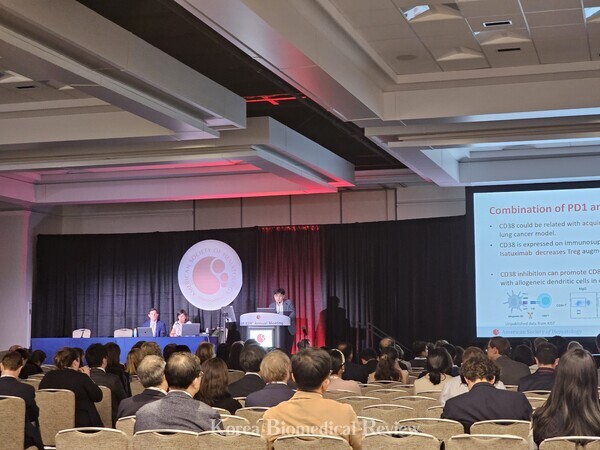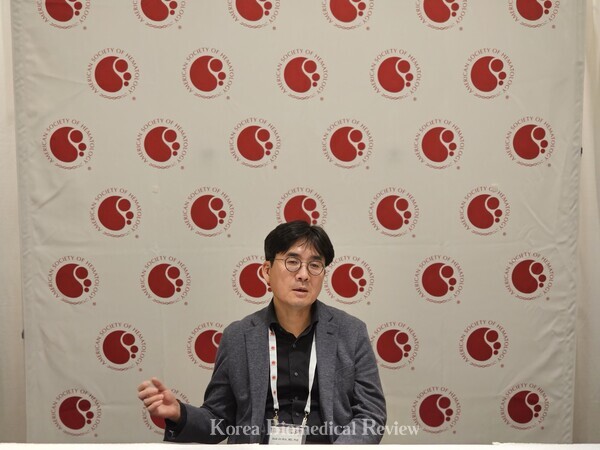SAN DIEGO, Calif. – By Lee Han-soo/Korea Biomedical Review correspondent -- A new study on the treatment of Extranodal NK/T-cell lymphoma (ENKTL) using a combination of isatuximab and cemiplimab has shown promising results, as reported by Professor Kim Seok-jin at Samsung Medical Center during the American Society of Hematology (ASH) 2023 conference.

This research addresses the challenging prognosis for patients with relapsed or refractory ENKTL, a rare but aggressive form of non-Hodgkin lymphoma. ENKTL is notably linked to EBV, a virus that can drive the expression of PD-L1 (Programmed Death Ligand-1), a crucial factor in the disease's progression and treatment response. This association with EBV was a key consideration in the study's approach, as traditional treatments for ENKTL, particularly in advanced stages, have been limited and generally ineffective.
Professor Kim emphasized the dire need for effective treatment options, stating, "The fact that treatment options for relapsed and refractory patients are currently extremely limited to traditional salvage chemotherapy is also contributing to this poor prognosis." He noted that patients diagnosed with stage IV often have little chance of survival upon relapse, indicating a high unmet need for effective treatments.
The study, known as CISL2102/ICING, focused on the combination of cemiplimab, a PD1 inhibitor, and isatuximab, an anti-CD38 monoclonal antibody.
In the trial, 37 patients were enrolled, with a significant number presenting high-risk features. The treatment regimen involved administering cemiplimab (250mg on days 1 and 15) and isatuximab (10mg/kg on days 2 and 16) intravenously every four weeks for six cycles. Responders then continued treatment every three weeks for up to 24 months or until progression.
The study achieved a complete response rate of 51 percent (19/37), exceeding the target of 40% percent and an overall response rate of 65 percent (24/37). The median progression-free survival for responders was an impressive 21 months.

Korea Biomedical Review met with Professor Kim to discuss the challenges and motivations behind this approach.
Kim explained that he conducted this study to explore amplifying the effect of PD-1 inhibitors by combining them, given that drugs like pembrolizumab showed only about a 20 percent efficacy when treating ENKTL patients influenced by EBV.
"This led to the exploration of the combination therapy, which aimed to leverage the potential synergistic effect of the two drugs," he said.
The study also highlighted a correlation between treatment response and PD-L1 expression. Patients with higher PD-L1 expression levels showed better outcomes. Also, while some patients experienced severe adverse reactions, Kim stressed that such events were manageable.
"Most treatment-emergent adverse events were grade 1-2 in severity, and the hematologic and non-hematologic grade ≥ 3 events were reported in 12 patients, including pneumonia," Kim said. "The study's results presented a treatment option excluding chemotherapy as a salvage therapy in ENKTL treatment, and this treatment option showed deep and sustained responses."
Also, the combination with a CD38 inhibitor as a model that can create synergy in addition to a PD-1 inhibitor is another significant part of the study, Kim added.
Related articles
- [ASH 2023] Epcoritamab and lenalidomide show promising results in challenging DLBCL cases
- [ASH 2023] ‘Hanmi’s AML drug tuspetinib shows high CR rate combined with venetocrax’
- [ASH 2023] Korean researchers suggest a drug-less future for CML patients
- [ASH 2023] Blood disorder innovators highlight latest progress at US meet

